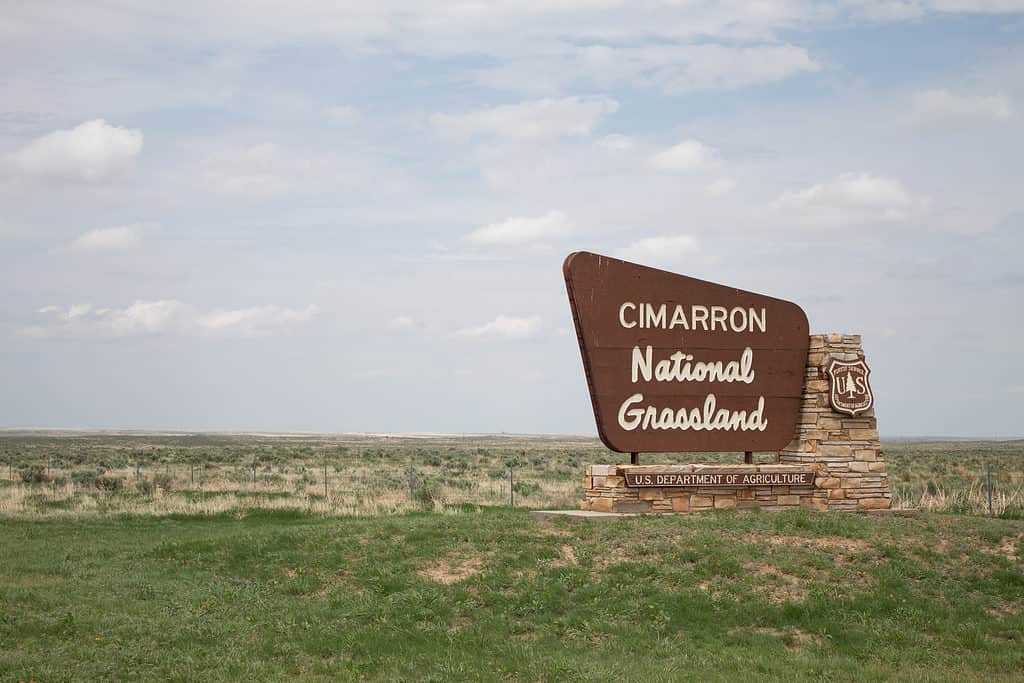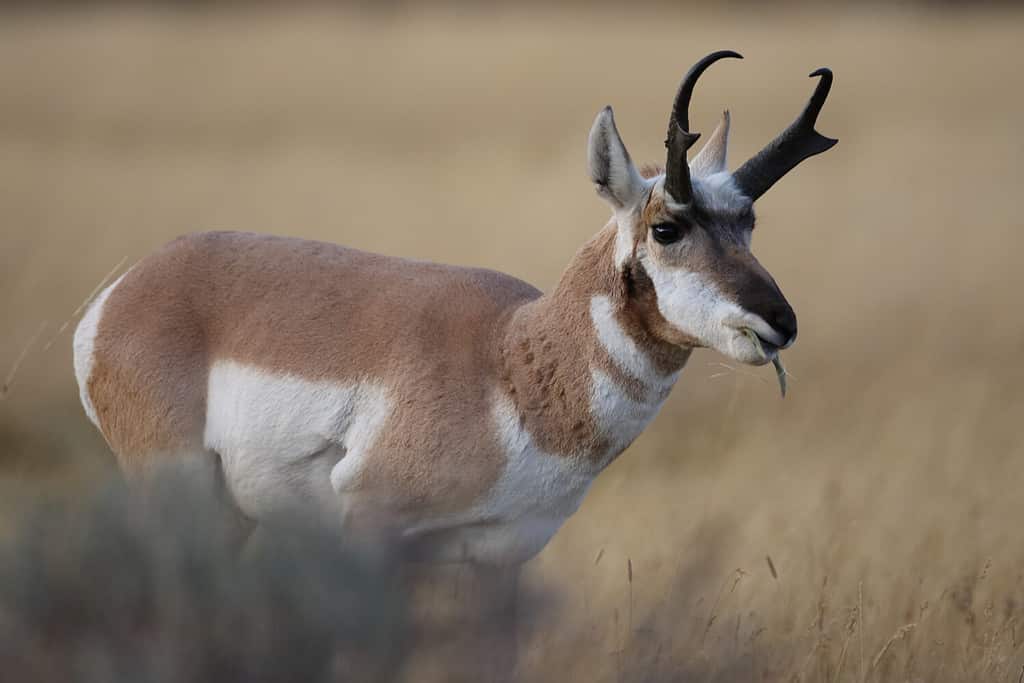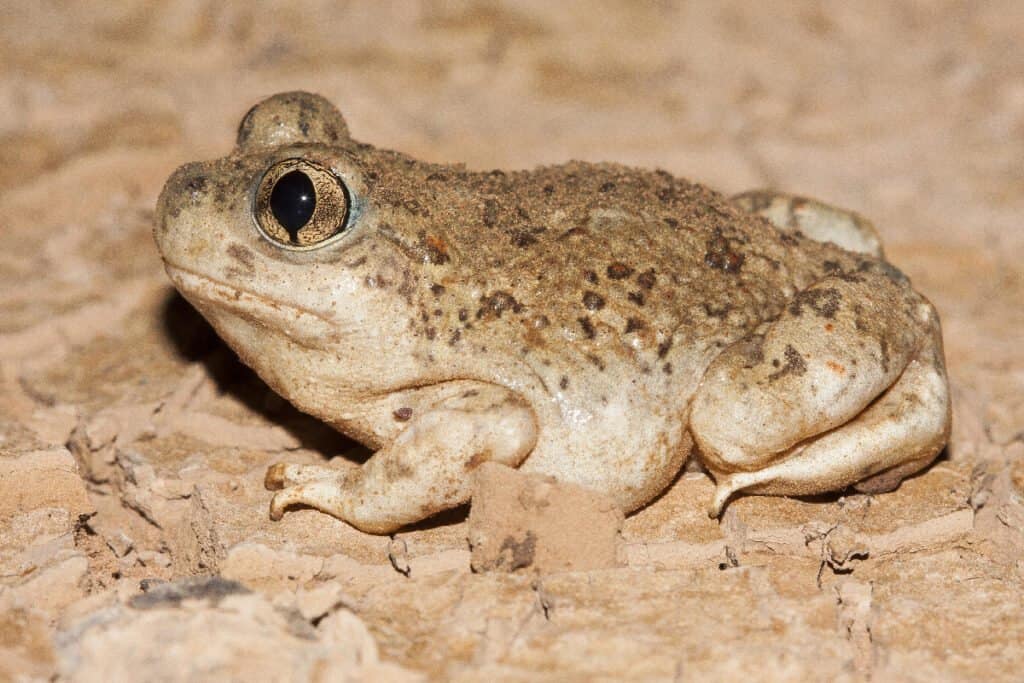Kansas is not known for its forests. In fact, trees only cover around 10% of the state, and most of these trees are on private land. Instead, Kansas is known for being a flat grassland where the land continues on as far as the eye can see. The Sunflower State has some very unique scenery, but forests are not the state’s strong point.
In this article, we will break down what large forests exist or used to exist in Kansas and what wildlife you can expect to find there.
Are There Any Forests in Kansas?
It may be hard to believe, but Kansas’s largest forest was lost way back in 1915. The Kansas National Forest project began in 1905 to try and find the best types of trees would be to survive in the harsh southwestern environment. More than 250,000 trees of different species were planted, including yellow pines, hackberry, black locust, jack pine, Osage orange trees, and scotch pine. Unfortunately, forest fires and harsh droughts wiped out most of these trees, and the project was discontinued and abandoned in 1915.
Kansas is home to immense wildlife reserves, grasslands, and wetlands. Nowadays, however, there are no extensive natural forests left in Kansas.

Cimarron National Grassland
Kansas is known for its temperate continental climate — extremely cold winters and extremely hot summers. The state is also well-known for its stormy weather, tornadoes, blizzards, and droughts. The geographical features of Kansas include flat expanses, rolling hills, and deep canyons. Kansas is blanketed with grasslands more suited to the local environment, and forests are not easily grown.
Historically Kansas has also been home to massive herds of bison, which graze on anything that sprouts from the ground. So, the bison likely chowed down any trees that began to grow before they could reach maturity.
Although Kansas does not have lush, green forests, the state has a sizable grassland called Cimarron National Grassland. This grassland is located in Morton County and comprises 108,175 acres with an elevation of 3,389 feet. Cimarron National Grassland is mostly flat, with a few gentle slopes. The vegetation that grows here is primarily shortgrass prairie grassland with sand sagebrush growing in the saltier soils. Cottonwood and other trees are found near the Cimarron River that flows through the area.
Cimarron National Grassland is rich in history and provides a home for many different animals while also being a popular place for recreational activities.

Cimarron National Grassland is 108,175 acres in size and situated in Morton County.
©Madison P Lauer/Shutterstock.com
History of Cimarron National Grassland
Originally the territory of the Comanche Native American tribe and their allies, the area was slowly taken over by farmers and prospectors who were claiming the land for their ranches. Their wheat farms remained bountiful for many years until a great drought, historically called the Dust Bowl, wiped them all out in the 1930s. Drought and overworking the soil caused massive dust clouds to engulf much of the southwestern USA at the time.
The federal government purchased this land from the bankrupt farmers, restoring the original prairie. In 1960, the Cimarron National Grassland was born.
Hiking and Camping in Cimarron National Grassland
The Santa Fe National Historic Trail is one major hiking trail that passes through Cimarron National Grassland. The grassland contains 23 miles of this trail — perfect for those wanting a longer hike. Another hiking trail is the Turkey Trail. It is a 10.5-mile-long trail that is great for birdwatching and wildlife viewing. Other notable trails include the Conestoga, Murphy, and Santa Fe Companion Trails.
There are many opportunities for camping in Cimarron National Grassland. Campground camping is available, which contains 12 campsites. The campground is located in the Cimarron Recreation Area and is very scenic, with terrific wildlife viewing opportunities. You can also camp with an RV either at the Cimarron Recreation Area or the Cimarron Campground. Group camping is also offered in the Cimarron Recreation Area and the Cimarron Group site. Lastly, a few dispersed camping areas are available on Santa Fe Companion Trail and the Santa Fe National Historic Trail.
Wildlife In Cimarron National Grassland
Here is some of the wildlife you may be lucky enough to see in Cimarron National Grassland.
Pronghorn
Pronghorns are large mammals that are indigenous to western and central North America. These creatures like to live in open, expansive terrain, making Cimarron National Grassland a great home for them. Pronghorns have distinct white fur on their rumps, chests, abdomen, and across their throats. Pronghorns have two horns: each of them is branched with one that points forward, hence their name. Adult males are generally over 4 feet long and weigh between 88 and 143 pounds. Adult females will weigh between 75 and 106 pounds.
Pronghorns feed on various vegetation, including forbs, grasses, cacti, and shrubs. As beautiful as they are, the pronghorn is an important prey species for many predatory animals. Predators of the pronghorn include cougars, wolves, coyotes, bobcats, and more. However, the pronghorn is great at avoiding predators due to their speed. The pronghorn is actually the fastest land mammal in the Western Hemisphere: the species can run up to 55 miles per hour!

Pronghorns feed on various vegetation, including forbs, grasses, cacti, and shrubs.
©Greens and Blues/Shutterstock.com
White-Tailed Deer
White-tailed deer are common in North America and the Cimarron National Grassland. It is a medium-sized deer that weighs between 100 and 200 pounds when fully grown. They typically stand at a height of around 2 to 4 feet. The deer have a reddish-brown coat in the summer, which changes to a greyish-brown shade during the winter. During all seasons, they have a distinctive white underside.
White-tailed deer are herbivores and feast on various plants and shrubbery found within the grassland. Their diet includes grasses, leaves, and woody plants. These deer are most active during early mornings and late evenings, spending most of the daylight hours relaxing in the vegetation. They are known for their great agility, running, and jumping at speed to evade predators. White-tailed deer can run up to 35 miles per hour.
Porcupines
The porcupine is a rodent that likes to live in temperate parts of North and South America and other regions. These spiny creatures are adaptable and can live in forests, deserts, hillsides, and even rocky outcrops. Porcupines are easily recognized by their sharp spines or quills used to protect against predators. Most porcupines are around 25 to 36 inches long, with tails around 8 to 10 inches long. They can weigh between 12 and 35 pounds. These creatures are large and slow, so a defense mechanism is absolutely essential. Contrary to popular belief, they cannot shoot their quills. However, the quills are barbed and can detach from their body, causing extreme pain to their attackers. If you come across a porcupine in the wild, keep your distance!
Porcupines are herbivores and can even climb trees for food. They eat leaves, herbs, twigs, bark, fruit, and more. They are also important prey species for some animals, such as coyotes, great horned owls, and bobcats. The porcupine has a very good defense system and will use its quills to scare off and defend against predators.

If you come across a
porcupine
in the wild, keep your distance!
©Structured Vision/Shutterstock.com
Prairie Dogs
Prairie dogs are small herbivorous burrowing ground squirrels that are native to the grasslands of North America. Grasslands are their preferred habitat as they thrive in this environment and Cimarron National Grasslands provides these creatures with an ideal home. The adult prairie dog will grow to between 12 and 16 inches in length and weigh between 1 and 3 pounds. The male prairie dogs are substantially larger than the female prairie dogs. These creatures have stout bodies with small ears and large noses.
Prairie dogs survive harsh weather and climate by burrowing. They make and live in their burrows which provide protection. These burrows are generally between 16 and 33 feet long and 6.6 to 9.8 feet below the ground. Although they are chiefly herbivorous, they may also eat insects. Their diet, however, mainly consists of grasses and small seeds. The prairie dog is preyed on by many animals, including eagles, coyotes, foxes, and weasels. The defense mechanisms include detecting predators from a large distance and alerting other prairie dogs with their distinctive call.
Bushtits
These small, non-migratory birds are abundant within the Cimarron National Grasslands. They are gray or brown in color, with a long tail and short stubby beaks. Bushtits are tiny little birds, measuring only 3 to 4 inches long and weighing less than a quarter of an ounce. Being very sociable, they live in large flocks of up to 40 birds. They will build their nests in the trees or tall shrubs of the grasslands, and both parents will help construct their new home.
Bushtits are insectivores and will feast on any small insect they can find, spiders and other small bugs. They are active foragers and will also dine on berries and seeds while hunting for food. On the other hand, bushtits provide a tasty meal for the predatory animals of the Cimarron National Grasslands. These include birds of prey, snakes, and other small mammals like weasels or raccoons.

Bushtits are insectivores and will feast on any small insect they can find, spiders, and other small bugs.
©Light and Vision/Shutterstock.com
Scaled Quail
Also known as the blue quail, the scaled quail is another common species in the Cimarron National Grasslands. Ground-dwelling birds live in groups called coveys, which can be anywhere from a few birds to over a dozen. True to their name, scaled quails have a scaled pattern on their breast and belly. Their feathers are primarily grayish-brown, with a characteristic crest on their heads. They are small birds weighing between 5 to 8 ounces and standing up to 10 inches tall. Scaled quails have an unusual habit of roosting in a circle on the ground with the other covey members, thought to be for conserving warmth.
Scaled quails are herbivores, and their diet depends on what is available to them throughout the year. They tend to eat seeds and grains that grow on the grasses and weeds of the grasslands, as well as plant matter and berries. Cacti are also an essential part of their diet, which they are able to break down and consume thanks to a specialized digestive system, allowing them to consume the cactus without being injured by the spines.
Spadefoot Toads
The spadefoot toad is an amphibian that spends most of its life underground. These creatures are generally found in arid climates and live in deserts, grasslands, and swamps. Spadefoot toads get their name from the hard, keratinous protrusions on their feet, which help them dig. They are round with short legs and have big protruding eyes. They are generally dull in color to blend in with their surroundings and can be gray, brown, or dull green. Spadefoot toads are 2-3 inches long and weigh between 1.7 and 3.5 ounces.
Spadefoot toads are opportunistic hunters who feed on whatever small invertebrate is available. Their diet includes flies, moths, earthworms, termites, spiders, and centipedes. Unfortunately, the spadefoot toad is a delicious meal for other animals, such as coyotes, snakes, and birds. The spadefoot toad is generally safe when underground but is vulnerable when emerging to hunt and breed. Defense strategies include aggressive noises, emission of foul-tasting chemicals, and puffing up to appear larger.

Spadefoot toads are opportunistic hunters who feed on whatever small invertebrate is available.
©Viktor Loki/Shutterstock.com
Plains Leopard Frogs
These animals can be found in the wetlands and ponds of the Cimarron National Grasslands. They are medium-sized amphibians with distinctive spots on their backs, like a leopard. They grow between 2 and 4 inches long and weigh between 0.2 to 1.5 ounces, with the females being larger than the males. Plains leopard frogs are primarily aquatic and will spend most of their time in the water. They are opportunistic feeders and will eat a large variety of prey whenever possible, including insects, small fish, and even other frogs.
The presence of plains leopard frogs is an important indicator of the wetland’s overall health. It is considered a species of special concern in some areas due to habitat loss and population decline. However, efforts are being taken to protect and conserve their natural habitat at Cimarron National Grassland.
Ornate Box Turtle
The ornate box turtle is native to the Great Plains of the United States. This turtle is usually found in grasslands and thrives on land instead of water. The ornate box turtle is relatively small, measuring around 4-6 inches when fully grown. The turtle’s shell can be gray, red-brown, or black and contain yellow lines from the center to the edges. They have an upper and lower shell connected around the animal’s head and limbs. The male ornate box turtles are generally smaller than the females and have larger inner claws on the back feet and a thicker tail. The males also have striking red eye color, while the females have brown eye color.
The ornate box turtles are omnivores, and their diet includes grass, shrubs, insects, invertebrates, vegetables, and more. Other animals, such as snakes and raccoons, prey on these creatures. These turtles cope with predation by retreating inside their thick shells and evading predators with their fast reflexes. The Cimarron National Grassland provides these turtles with a great home, as they can burrow and eat as much grass as they want!

Ornate box turtles are relatively small and grow to about 4-6 inches.
©Ingrid Curry/Shutterstock.com
Prairie Rattlesnake
The prairie rattlesnake, also known as the western rattlesnake, is native to North America’s grasslands, prairies, and deserts, including Cimarron National Grassland. These snakes’ colors vary, but they usually have brown blotches or stripes along their bodies. They can grow up to 4 feet long and have a distinctive rattle at the ends of their tails which they use to make noise to warn against threats. These prairie rattlesnakes are most active during the warmer months of the year and will hibernate when it gets colder.
Prairie rattlesnakes are opportunistic eaters who feed on prey like small mammals like rabbits or mice, birds, reptiles, and amphibians. To catch their next meal, they will lie and wait near burrows or tracks where animals may pass by. They use their sensitive sense of smell and heat-sensing abilities to detect prey and will strike with lightning-fast speeds when their victim is in range. These snakes are highly venomous and potentially threaten humans, so wear thick boots and long pants when hiking through the grassland and if you hear a fast rattling sound, walk away from it.
Texas Horned Lizard
The Texas horned lizard is a spiky, North American species of reptile. And despite its name, it can be found in many parts of the U.S., not just Texas. The species gets its name from its characteristic horns spanning its body. The two largest horns are crowned on its head, and there are two horns on its brows and jawline. Spikes are found along the lateral parts of the torso and on its back. The coloration of the Texas horned lizard depends on the environment in which it is trying to blend in. It can range from yellow or reddish-brown to a tannish brown. These lizards are pretty small, with an average length between 3.7 and 5 inches.
The Texas horned lizard is a carnivore and primarily eats insects and worms, with the most popular insect in its diet being harvester ants. Other insects they may eat include termites, beetles, and grasshoppers. These reptiles need exposure to the sun to live a healthy life. Because of this, the Texas horned lizard is often found in open, rocky areas where they can sunbathe. At night, these creatures will bury themselves in the sand. Keep a lookout for these unique lizards at Cimarron National Grassland!

Though the Texas
horned lizard
prefers to feast on ants, it will eat other types of invertebrates.
©Seth LaGrange/Shutterstock.com
Where Is Cimarron National Grassland Location on a Map?
Not quite a forest, Kansas has the Cimarron National Grassland. It’s located between Rolla and Richfield, Kansas, near the Oklahoma border. It comprises 108,175 acres, and a few trees do grow nearby the Cirramon River that flows through, including cottonwood trees.
The photo featured at the top of this post is © Madison P Lauer/Shutterstock.com
Thank you for reading! Have some feedback for us? Contact the AZ Animals editorial team.






